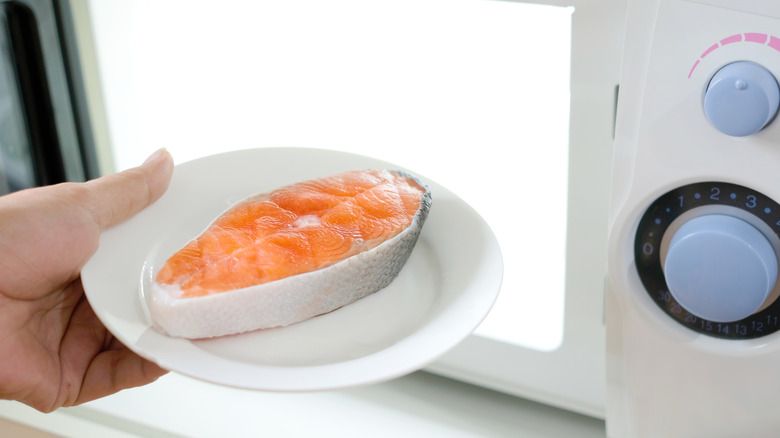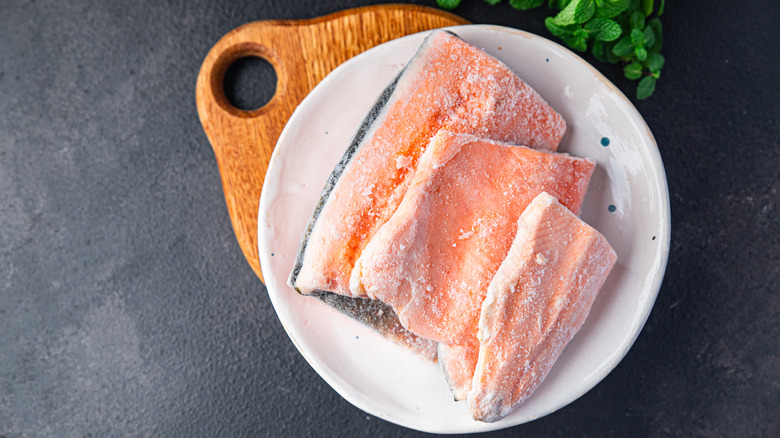You Can Thaw Salmon In A Microwave, But That Doesn't Mean You Should
Freezing salmon is a strategic way to make your fish last longer, but defrosting it can be a pain. You'll want to make sure you're thawing it properly, as doing so incorrectly can lead to bacteria growth that causes foodborne illnesses, according to the U.S. Food & Drug Administration. So what's a safe method for defrosting? You have a few options, depending on how far in advance you remembered.
If you planned ahead of time, you could move your salmon from the freezer to the fridge to let it thaw overnight – it's helpful to put the fish in a bowl or at least on the bottom shelf of the refrigerator so that any juices won't drip down into the rest of your food. However, if you just realized you wanted to make salmon for dinner during the afternoon, the FDA recommends placing it in a sealed plastic bag and letting it sit in cold water until it's soft, which should take about an hour.
But what if you need defrosted salmon stat? It's tempting to throw it in the microwave, and it is technically possible to do so — but you may want to avoid it if you can.
Thawing your salmon in the microwave creates an unevenly cooked result
If you want to defrost your salmon in the microwave, here's what you would do: Place the fish on a plate, cover it with a paper towel, and microwave it on the defrost setting. The time will depend on the thickness of your fish, and you'll want to flip the filet every 30 seconds or so to make sure it thaws evenly. Once it gets bendy but still has ice crystals, let it sit on the counter for a few minutes to finish defrosting.
This method is easy enough but comes with a major catch. Microwaves distribute uneven heat, so while some parts of your salmon may be perfectly malleable, others may be cold and hard. Not only is it difficult to tell when your fish is done defrosting, but the microwave's intense bursts of heat may alter the texture of your filet, resulting in dry fish once you've finished cooking it. Even worse, the microwave may cook the thinner ends of the fish while the thicker parts are still thawing.
And while you have a little more leeway with fish that defrosts in cold water, the FDA advises cooking salmon immediately after defrosting it in the microwave. So unless you're prepared to start cooking right away and want to avoid compromising some of your salmon's texture, let the microwave be your last resort when it comes to defrosting your seafood.

